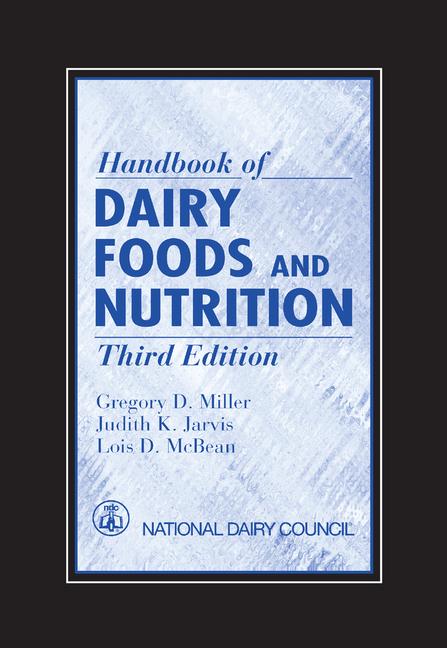Minnesota's Kemps celebrates 100 years of innovation with milk and dairy foods

A vintage truck in the lobby greets visitors to the company’s corporate headquarters in St. Paul, Minn. Kemps celebrates its 100th anniversary in 2014. Kemps executive team includes (from left) Bob Williams, vp operations; Rachel Kyllo, senior vice president of sales and marketing; Cindy Trousdale, chief financial officer; and Greg Kurr, president and CEO. Photo by Vito Palmisano

Three new high-protein dairy products introduced in 2013 are Greek-style yogurt, cottage cheese and snack mousse. A food writer described the texture of the mousse as “fluffy” and likened the mouthfeel to cheesecake.

Packaging innovations at Kemps included this 76-ounce blow-molded bottle for flavored milk.

Kemps President and CEO Greg Kurr says the company must bring “solutions” for selling more milk to its retail customers. Photo by Vito Palmisano




What’s in your pantry? Chances are good that some of the foods or beverages originated in Minnesota. Food — its production, processing and distribution — have been an important part of the state’s economy since the 19th century. Today, three Fortune 500 food processors (General Mills, Land O’Lakes and Hormel) and three food wholesalers and retailers (CHS, Supervalu and Nash Finch) call Minnesota home.
Although it is not as large as its Fortune 500 brethren, St. Paul-based Kemps is a formidable competitor in the Upper Midwest. The Grade A dairy processor and ice cream maker dominates sales of milk and frozen desserts in Minnesota and Wisconsin.
Kemps holds its own against national brands in some dairy categories. In flavored milk, Kemps is No. 3 nationally (after Nesquik and TruMoo), according to the company, while its frozen yogurt is No. 1 in the United States (as measured by volume). Retail distribution puts some products on grocers’ shelves from coast to coast. Kemps’ growing foodservice business supplies national restaurant chains, including Starbucks, McDonald’s, Ruby Tuesday and Buffalo Wild Wings.
Kemps traces its roots to an ice cream and candy business founded by William Henry Kemps in 1914. Today, it is a division of Dairy Farmers of America, the cooperative based in Kansas City, Mo., that bought the company in 2011 from HP Hood, Lynnfield, Mass.
The dairy processor is celebrating its centennial in 2014. What’s remarkable is that the Kemps brand has endured. Kemps has had a number of different parent companies in its 100-year existence. What often happens is that company names and their brands tend to be subsumed by each new owner. But that has not been the case with Kemps.
A history of innovation
Compared to the nondairy beverage industry and other food processors, the dairy industry is not considered innovative. Two reasons that observers often point to are federal pricing of milk and strict standards of identity for milk, ice cream, cheese and other foods. But that has not deterred Kemps. Developing new products is part of the company culture.
“We view innovation as our responsibility to keep categories fresh and drive sales for our customers,” said CEO Greg Kurr.
The company has made its mark with new dairy products and packaging. It was one of the first processors to have a yogurt-juice beverage (called Yo-J). Other innovations include a pelletized ice cream product (called IttiBitz) for the supermarket channel, frozen yogurt parfaits with real fruit toppings and the SnoBlitz, a restaurant-style eat-at-home soft-serve dessert with inclusions that can be served straight from the freezer.
In 2013 Kemps took a languishing dairy product — cottage cheese — and created two high-protein foods (Greek-style cottage cheese and Greek snack mousse). It positions them as healthy snacks along with its new Greek-style yogurt, also introduced last year.
The snack mousse, sold in 4.77-ounce single-serve cups, has 11 grams of protein, 3 grams of fat and 190 calories. Flavors are Key lime pie, French silk, strawberry and raspberry. One food writer described the texture as “fluffy but creamy” and said it feels like light cheesecake.
The Greek-style cottage cheese has 19 grams of protein, 2 grams of fat and 130 calories in a 5.7-ounce serving. Flavors are plain, peach, pineapple and cucumber-dill. The curds are blended into a smooth consistency.
The Greek yogurt has 12 grams of protein in a 5.3-ounce serving and is sold in strawberry, raspberry, cherry and vanilla flavors.
The dairy processor has been no less diligent in innovations in packaging, using squeeze bottles to sell sour cream and creating a 76-ounce cow-shaped plastic jug that makes its flavored milks stand out in the dairy case.
Kemps won’t rest on past successes, Kurr said. The company must continue to develop new ideas to drive sales of dairy products.
Milk still matters
But innovation and competition are not all that occupy Kurr’s time. Like other heads of large dairy companies, Kurr is concerned about the declining sales of milk in gallon jugs. After all, milk accounts for half of the company’s annual revenues. Reversing that sales trend “is a high priority,” he said.
I asked Kurr why Kemps would not simply pull out of the fluid category and focus instead on ice cream, cottage cheese, sour cream and other dairy products. Kurr said that even with declining consumption, retailers still want milk because it leads to a bigger basket. When consumers go to a store to buy milk, they end up adding more groceries to their shopping cart.
“Kemps is going to be part of the solution,” he said.
The CEO is a sales veteran. Kurr, who has been with the company for 26 years, served as vice president of sales since 1990 until stepping into the CEO role in 2013 when Jim Green retired after 20 years.
Milk accounts for the majority of the company’s total annual revenues. Rounding out sales is ice cream, novelties, sour cream, yogurt, cottage cheese, beverages and other dairy products. Kemps offers a full line of conventional and organic milk in paper and plastic containers. Value-added dairy beverages include lactose-free milk, iced coffee, and egg nogs and dairy-based holiday beverages such as J.R. Watkins chocolate mint.
The challenges and opportunities in the milk category are well-known. One current strategy is to call out the benefits of milk, especially the protein content. The Milk Processor Education Program (MilkPEP) is doing that with its “protein fight club” campaign. But any milk processor can claim its milk has protein. The tie-breakers then are innovation, merchandising and customer alignment, Kurr said. Companies also have to play the role of “trusted advisor” and not be merely a vendor to retailers, he said. It is a matter of taking solutions to the customers. Kemps takes insights that support the category, Kurr said.
Kemps is following consumers, who are changing where they shop for groceries. Natural-foods stores, specialty food stores and drugstores are all potential new customers for Kemps milk and other dairy products.
While it is sharing solutions with customers, internally Kemps also is delving into its product portfolio and the logistics involved in taking product to market.
What will help Kemps succeed in the fluid milk category is its corporate parent. Kurr said that in the view of DFA’s ownership, “there are no obstacles to winning and revitalizing the fluid milk category.”
The future of ice cream
While milk accounts for half of Kemps revenues, the next largest category is ice cream. Kemps produces premium, regular and economy products at a plant in Rochester, Minn. (It has a separate fluid milk plant in Rochester, too.) The ice cream and frozen yogurt category can help Kemps grow on a national basis for many reasons. Ice cream has a longer shelf life, it allows Kemps to go after new customers, and the product provides the opportunity to expand into different channels of distribution. Besides producing its own brands, Kemps is a co-packer and private label manufacturer.
Kurr called frozen desserts a “strategic pillar” in Kemps’ national growth plans. Its products are already sold across the United States in major supermarket chains. But don’t overlook how entrenched the brand is locally. The Kemps brand is a favorite in Minneapolis. The company also has strong market share in the local foodservice channel. It developed a milk shake product (the malt cup) for quick-serve restaurants that were not offering dairy-based desserts or beverages. At the point of sale, foodservice operators simply add a little milk to the cup and prepare the shake on a blender.
A brief history
As an independently operated business, Kemps grew by mergers and acquisitions since its founding in 1914. In 1961, Kemps, Crescent Creamery and Dolly Madison formed Marigold Foods, and in 1968 Marigold merged with Ward Foods. Then the business became a favorite target of larger food processors. The Dutch conglomerate Wessanen bought Marigold from Ward in 1978. During its ownership, Wessanen acquired Cloverleaf Creamery, the Wisconsin division of Fairmont Foods, Cedarburg Dairy, Gillette, Becker’s Dairy and Oak Grove Dairies, folding them all into Marigold.
In 2001, National Dairy Holdings bought Marigold and Crowley, which sold them to HP Hood in 2004. After owning Kemps for seven years, Hood sold the business in 2011 to the Missouri-based cooperative Dairy Farmers of America. DFA is No. 8 on Dairy Foods’ Dairy 100 list of largest processors with sales in 2012 of $3.5 billion. In 2012, Kemps acquired Cass-Clay Creamery of North Dakota from Associated Milk Producers Inc.
One might expect that the Kemps brand would have disappeared over the years with each change in ownership. But that hasn’t been the experience at Kemps. Perhaps one reason that the Kemps brand persevered over time is the regard consumers have for the name. Senior Vice President of Sales and Marketing Rachel Kyllo said consumers describe Kemps as “warm” and “charming.”
Rooted in the community
Kemps has a relatively “small geography but it’s a big brand,” Kyllo said. That’s due in part because the company has woven itself into the fabric of the lives of consumers. And it skillfully uses local businesses and personalities to cement that relationship. For instance, the Pearson’s Salted Nut Roll soft serve ice cream is based on a popular candy from the Pearson Candy Co. of St. Paul. (The confectioner celebrated its own centennial in 2009). For the natural products and flavors retailer J.R. Watkins of Winona, Minn., Kemps produces seasonal ice creams and egg nogs.
Then there is Kemps’ affiliation with Joe Mauer of Major League Baseball’s Minnesota Twins. Mauer is a local hero who was a stand-out athlete at St. Paul’s Cretin-Derham Hall high school. He and his mom, Teresa, appear in ads for Kemps milk, ice cream and novelties. For customers and consumers in Wisconsin, Kemps makes a line of ice cream products branded with the Green Bay Packers logo.
Kemps involves itself in the community in any number of ways. It takes to heart Kemps’ mission statement to “nourish families.”
“We walk the talk with our purpose statement,” Kyllo said.
Former CEO Green is widely considered by veterans of Kemps as the individual who fostered the culture of collaboration, innovation and community service. For example, Kemps employees volunteered last year at an annual event put on by the Twin Cities food bank Second Harvest Heartland. Kurr said the company’s commitment to the organization will grow.
The Gallons for Good project is another company initiative that raises money to support the Kids In Need Foundation, a 501(c)(3) charitable organization. KINF provides free school supplies to 4,000 needy children in Minnesota and Wisconsin. Kemps committed a portion of every gallon of Kemps Select Milk sold in August and September. It raised $40,000 for schools in Minnesota and in Green Bay, Wis.
A popular annual ice cream flavor contest is another way that Kemps interacts with the community and its fans. Visitors to the Minnesota State Fair are invited to vote in the Kemps Hometown Favorites contest. Three finalists — Funnel Cake A-Fair, Pistachio Fruit Party and MinnieAppleLicks — were put up to a vote at the fair. The pistachio flavor was the winner and will be produced this summer.
Kyllo points to the “fun factor” in marketing the ice cream category. It is easy to build events around ice cream, she said, citing the state fair contest. Kemps, like many ice cream processors, uses a rotating flavor of the month to keep the category new and different.
Consumer contests are not the only source of ideas. Kemps takes a methodical, data-driven approach to product development. Besides its internal research, Kemps leverages insights from Dairy Management Inc., Rosemont, Ill., the checkoff-funded dairy farmers’ organization. Kyllo, who has served on several DMI committees, said the organization is “supportive of providing relevant insights and innovation testing.”
Besides its involvement with DMI, Kemps executives play active roles in regional and national associations and business partnerships, including the International Dairy Foods Association, Milk Processor Education Program and the Midwest Dairy Association.
DFA’s investment
But what shapes and supports Kemps growth the most these days is Dairy Farmers of America. DFA’s ownership affects Kemps directly in many ways. For one, DFA brings resources and investment to Kemps, Kurr said. It has benefitted from the economies of scale available through DFA’s ownership.
Kurr gives DFA high marks for supporting the Kemps organization. But Kemps has never lacked in offering continuing education or promoting up the ranks. Senior managers have been at the company for 20 years or more.
One of the constants through the years at Kemps has been its committed and passionate employees. “We celebrate our employees continuously,” Kurr noted. “That has led to our ability to celebrate our 100th anniversary.”
“DFA is willing to invest for the short term and for the long term,” Kurr said, adding that “there is a willingness to innovate and to grow.”
DFA’s investments include the 2012 acquisitions of Cass Clay Creamery, Fargo, N.D. and Guida’s Dairy, New Britain, Conn., as well as the 2013 purchase of Dairy Maid Dairy, Frederick, Md. Leveraging scale and sharing of best practices is common practice within DFA’s fluid milk and ice cream division, Kurr said.
Vice President of Operations Bob Williams keeps his eye on the capital expenditure needs of the company’s six processing plants in Minnesota, North Dakota and Wisconsin and its logistics networks.
Williams works to ensure appropriate equipment and capital expenditures are made to keep the business running smoothly and efficiently. His responsibilities in this area extend to Kemps’ transportation fleet. For example, by analyzing how drivers truck products to their destination, the company is able to have fewer routes and/or longer routes for deliveries resulting in cost savings.
“It’s the cows” has been Kemps long-time tagline. But now, Kemps has an even stronger connection to dairy farmers. DFA’s ownership allows Kemps to use the “farmer-owned” descriptor in its marketing and public relations efforts. That resonates particularly well in farm states like Minnesota and Wisconsin.
“The connection to the farm is strong,” Kurr said. ”We are inspired each and every day to exceed our farmer-owners’ expectations.”
With DFA’s financial backing and Kemps’ executive leadership, more U.S. consumers might be stocking their pantries with products made by this dairy processor during the next 100 years.
Looking for a reprint of this article?
From high-res PDFs to custom plaques, order your copy today!














